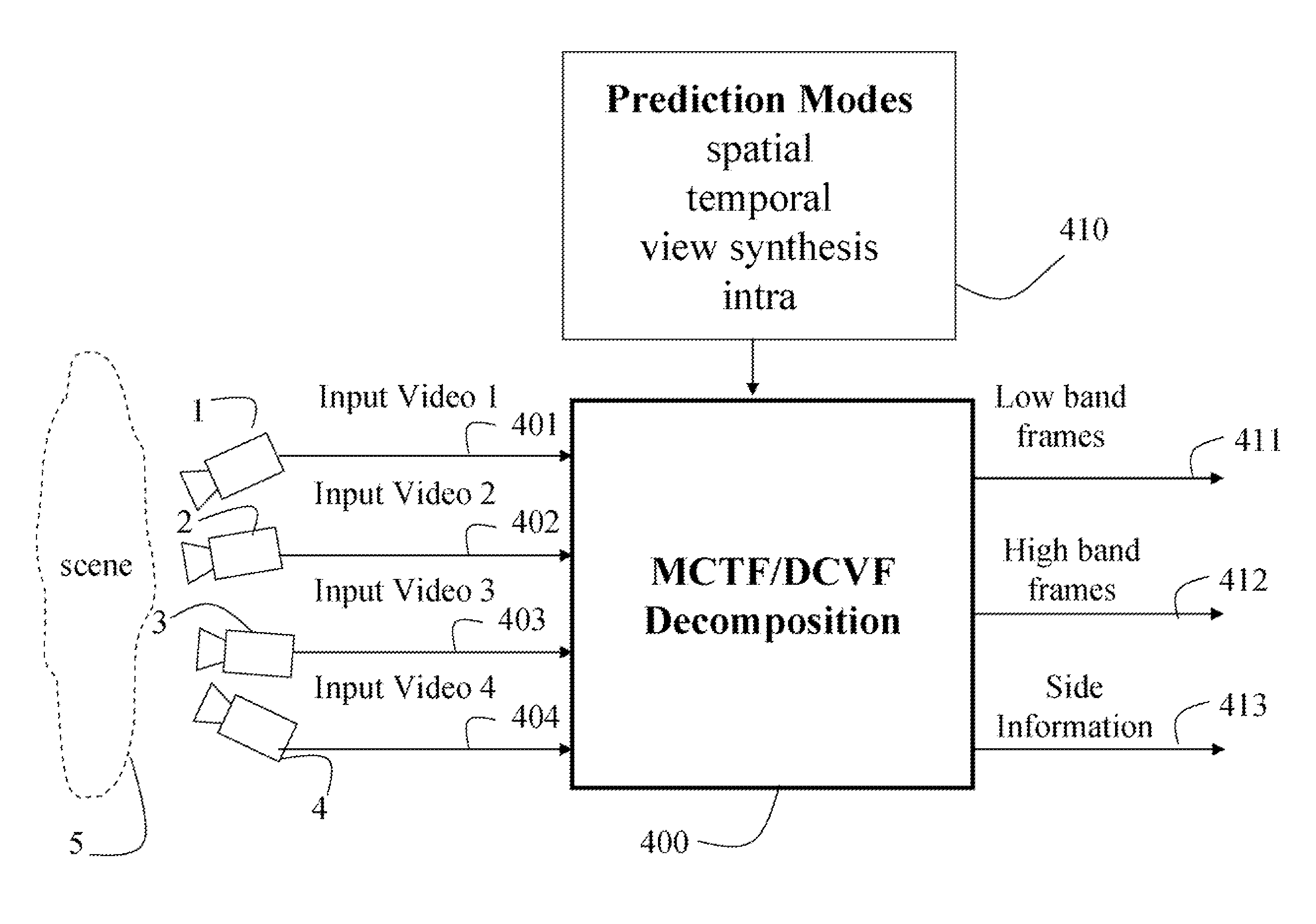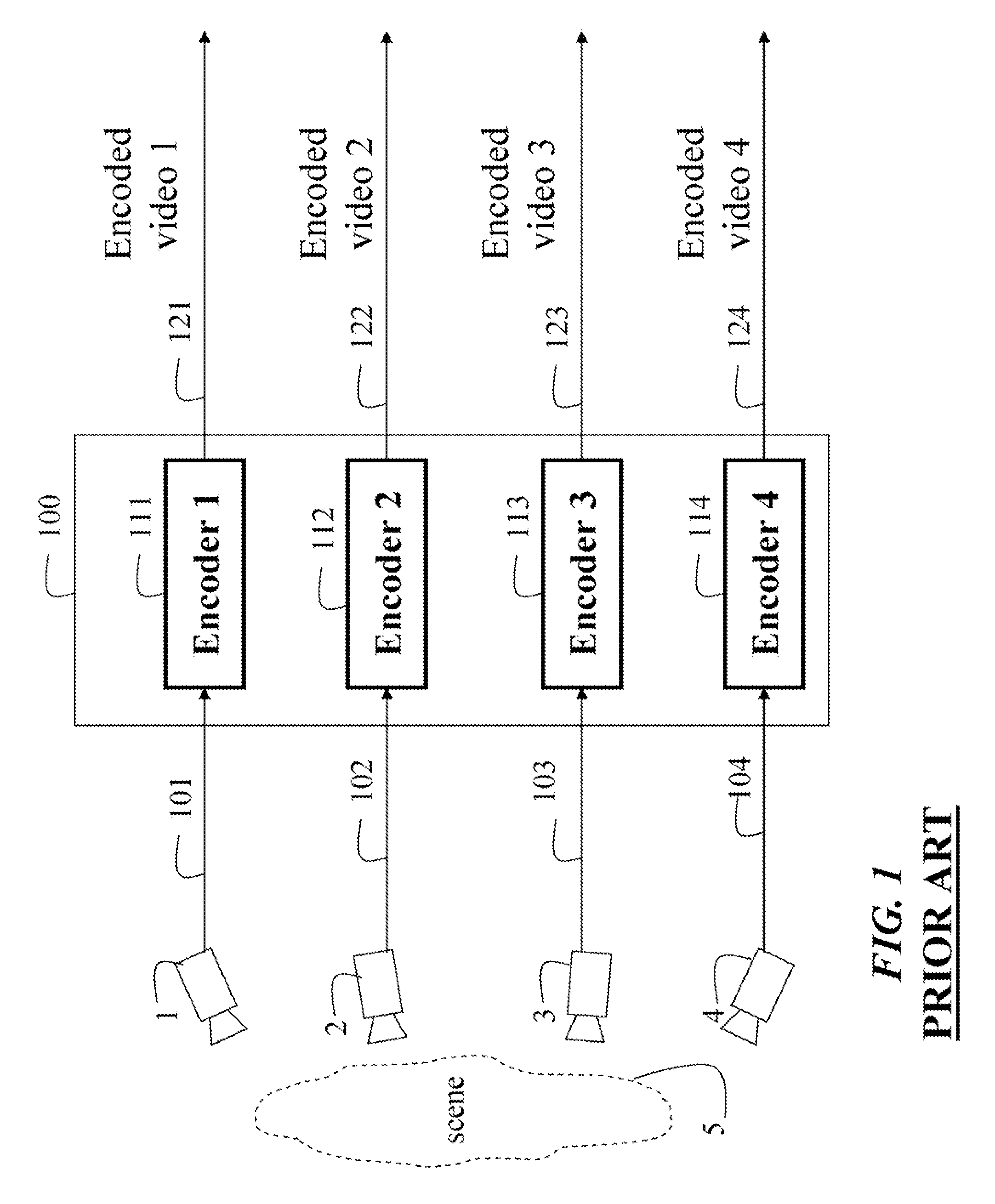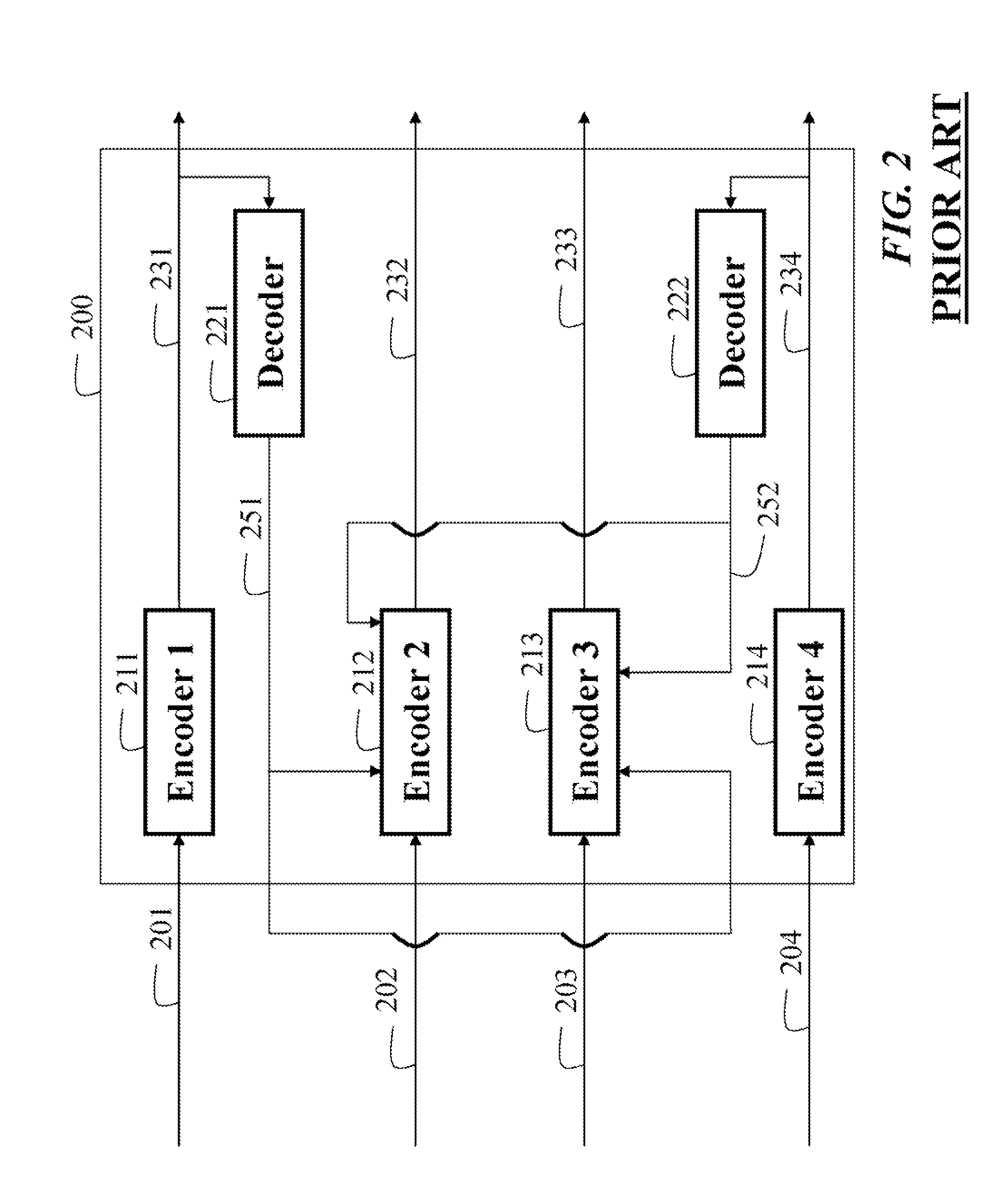Method and system for processing multiview videos for view synthesis using skip and direct modes
a multi-view video and skip technology, applied in the field of synthesizing multi-view videos, can solve the problems of inability to encode multi-view videos, inability to use efficient methods, and inability to directly encode multi-view videos
- Summary
- Abstract
- Description
- Claims
- Application Information
AI Technical Summary
Benefits of technology
Problems solved by technology
Method used
Image
Examples
first embodiment
[0200]In a first embodiment, an additional bit is added in the case when mb_skip_flag is equal to 1 to distinguish the conventional skip mode with the new synthetic skip mode. If the additional bit equals 1, this signals the synthetic skip mode, otherwise if the additional bit equals 0, the conventional skip mode is used.
second embodiment
[0201]The above signaling scheme would work well at relatively high bit-rates, where the number of skipped macroblocks tends to be less. However, for lower bit-rates, the conventional skip mode is expected to be invoked more frequently. Therefore, the signaling scheme that includes the synthetic skip modes should not incur additional overhead to signal the conventional skip. In a second embodiment, an additional bit is added in the case when mb_skip_flag is equal to 0 to distinguish the conventional non-skip mode with the new synthetic skip mode. If the additional bit equals 1, this signals the synthetic skip mode, otherwise if the additional bit equals 0, the conventional non-skip mode is used.
[0202]When a high percentage of synthetic skip modes are chosen for a slice or picture, overall coding efficiency could be improved by reducing the overhead to signal the synthetic skip mode for each macroblock. In a third embodiment, the synthetic skip mode is signaled collectively for all m...
PUM
 Login to View More
Login to View More Abstract
Description
Claims
Application Information
 Login to View More
Login to View More - R&D
- Intellectual Property
- Life Sciences
- Materials
- Tech Scout
- Unparalleled Data Quality
- Higher Quality Content
- 60% Fewer Hallucinations
Browse by: Latest US Patents, China's latest patents, Technical Efficacy Thesaurus, Application Domain, Technology Topic, Popular Technical Reports.
© 2025 PatSnap. All rights reserved.Legal|Privacy policy|Modern Slavery Act Transparency Statement|Sitemap|About US| Contact US: help@patsnap.com



